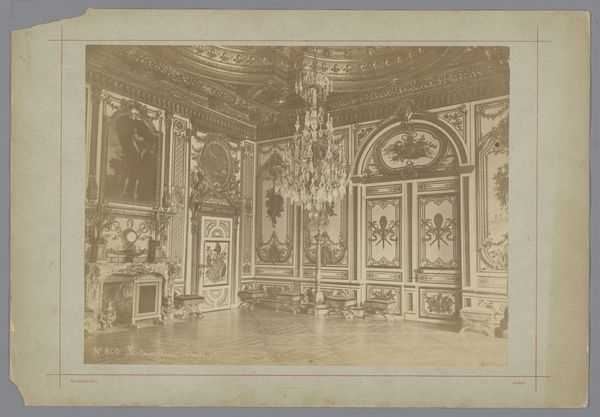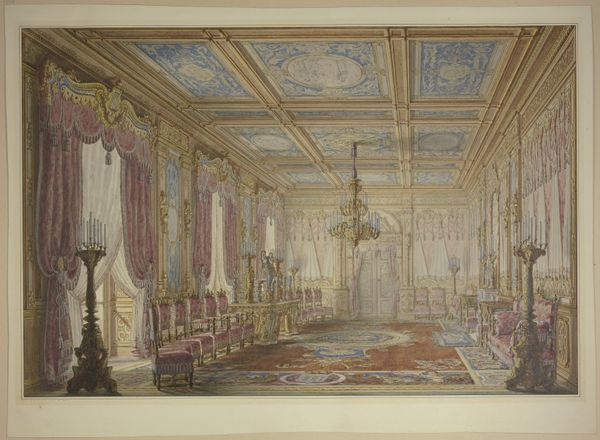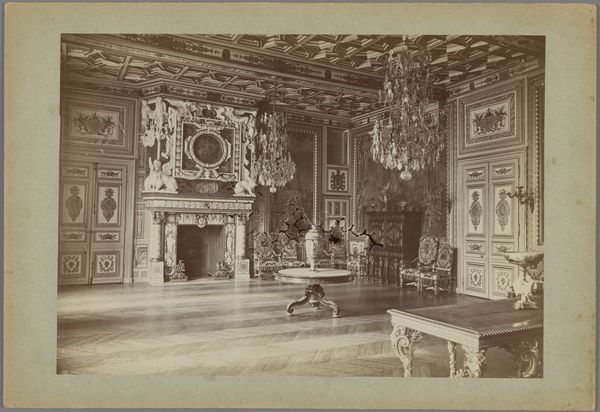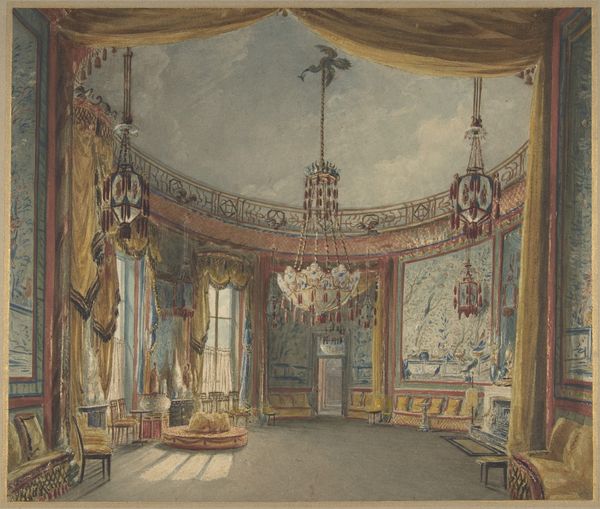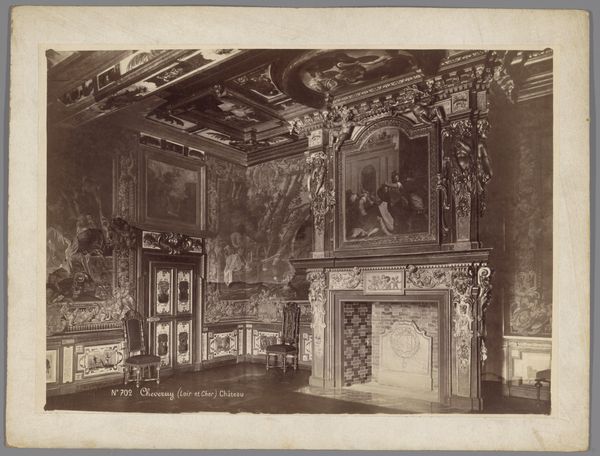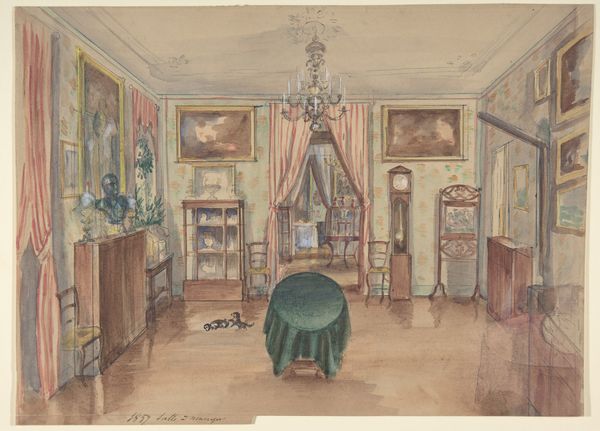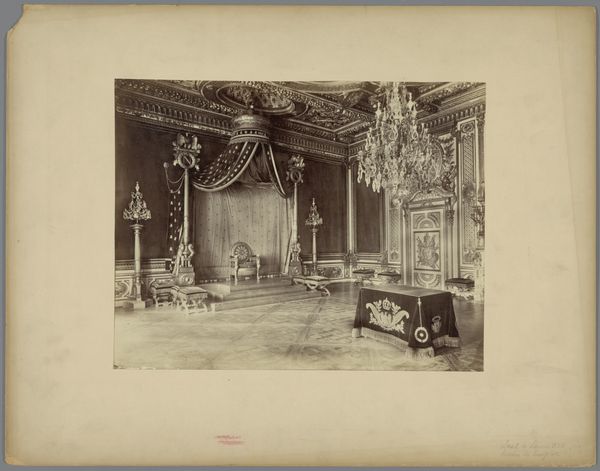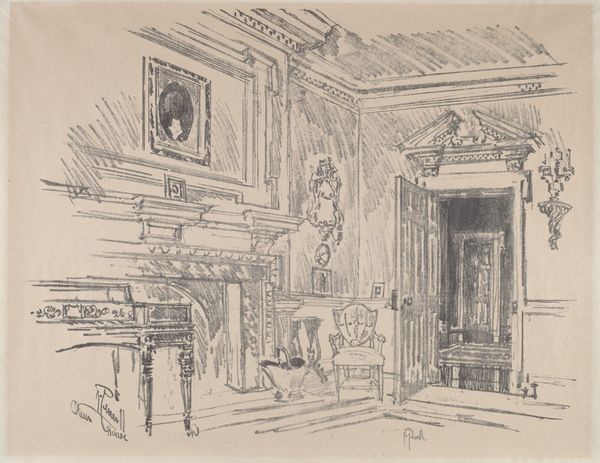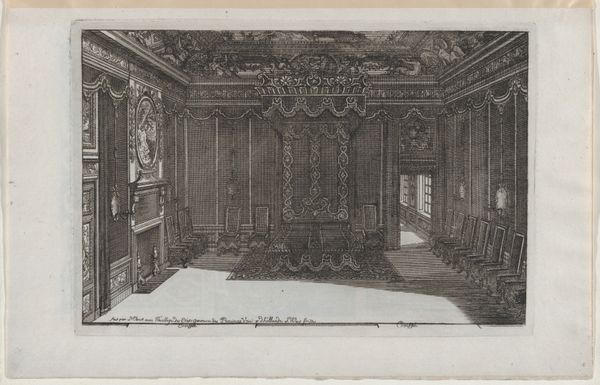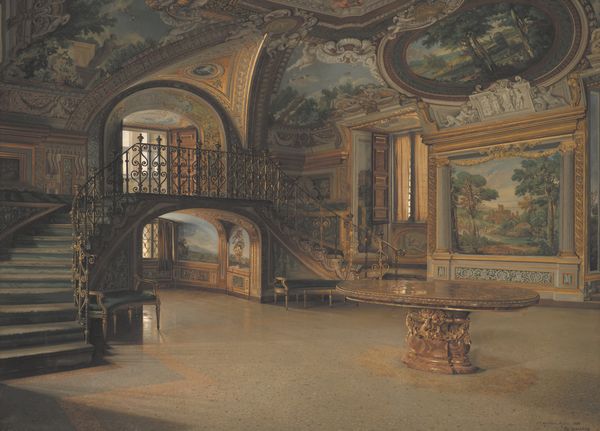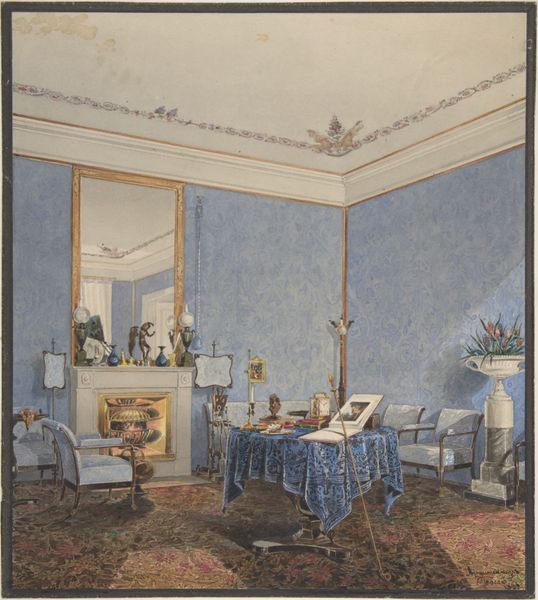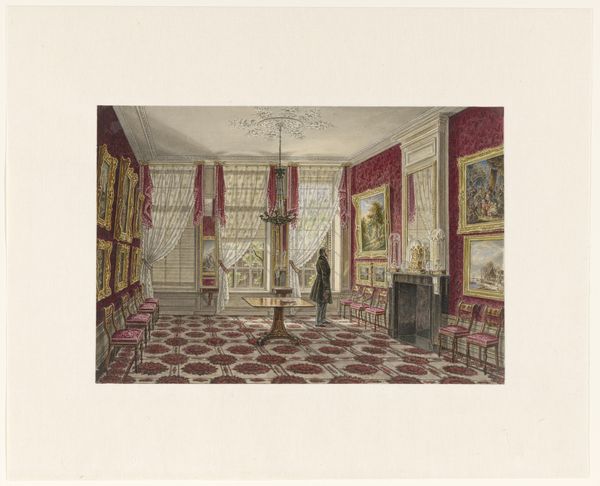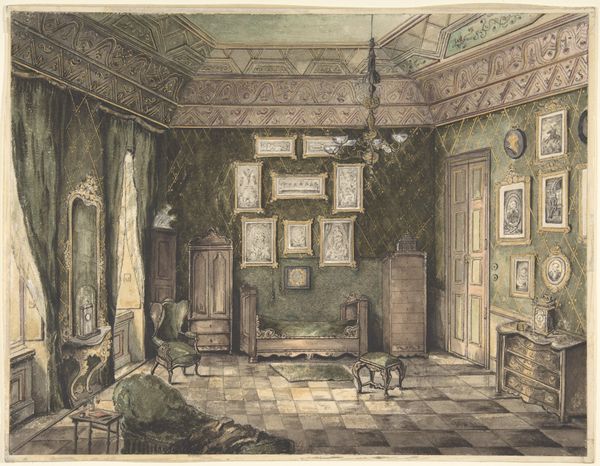
Project for a Room for King Ludwig II (1854–1886) of Bavaria 1864 - 1920
0:00
0:00
Dimensions: 30 3/4 x 39 1/2 in. (78.1 x 100.3 cm)
Copyright: Public Domain
Editor: Here we have Gyula Benczúr's “Project for a Room for King Ludwig II (1854–1886) of Bavaria,” made with tempera sometime between 1864 and 1920. It's striking how ornate everything is; the gold leaf must have taken an army of artisans! What draws your eye when you look at this piece? Curator: I’m immediately drawn to the question of production. This wasn't just Benczúr’s artistic vision, but a highly collaborative manufacturing process involving specialized laborers: gilders, carpenters, textile workers. Where did those materials come from, who mined them, who wove that fabric? Editor: So you see this as a record of many hands and processes, not just one artist's "genius"? Curator: Precisely. Consider the political context too: Ludwig’s lavish spending on these projects occurred while Bavaria was undergoing significant social and economic changes. How does the consumption and display of such excessive ornamentation play into larger discussions of power and social inequality at the time? Editor: That really shifts my perspective. I was focused on the aesthetics, but now I’m wondering about the human cost and material supply chains. Curator: It’s easy to get lost in the romanticism, but by focusing on materiality and production, we can excavate the social realities embedded in these objects. What’s more, what do we make of an artwork produced as a Project? In some ways, the artistic process might be of more material impact that what this represents. Editor: I’m definitely going to be thinking about labor and materials differently when I look at art from now on. It's a good reminder to consider who makes these objects and under what conditions. Curator: Exactly. Seeing the art world as part of the broader material world, changes everything.
Comments
No comments
Be the first to comment and join the conversation on the ultimate creative platform.
